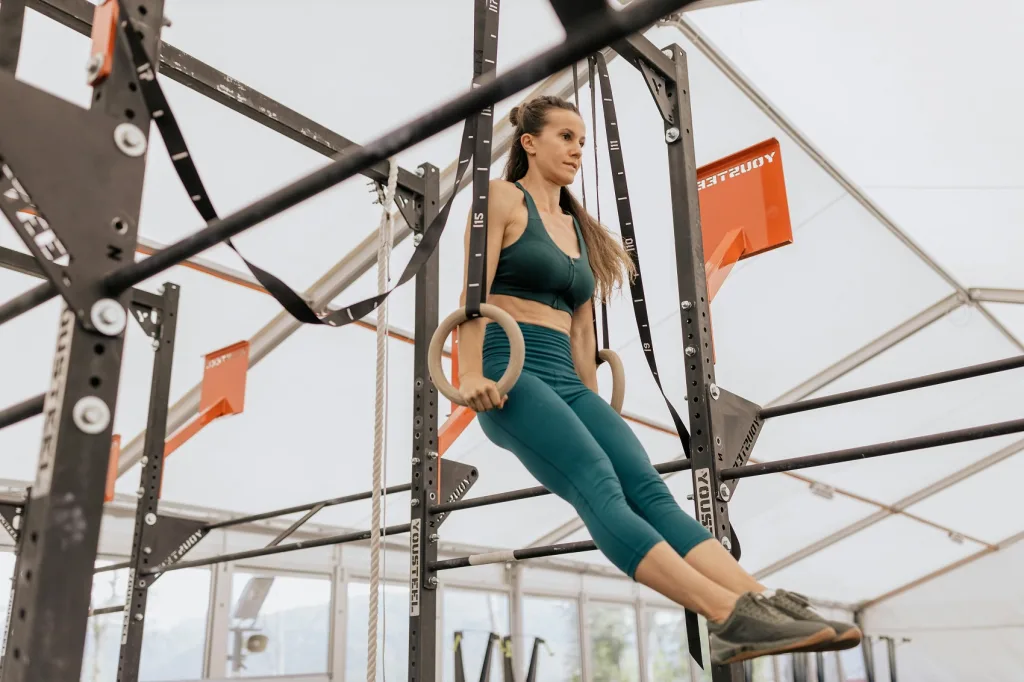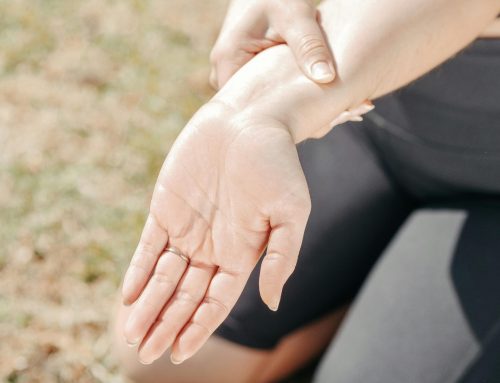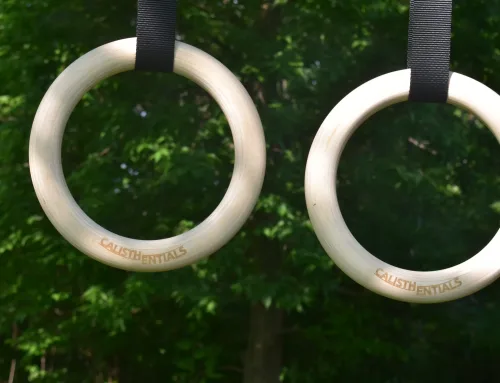What Makes Rings So Good For Building Your Chest?
Gymnastics rings offer a challenging way to build a bigger chest with just your bodyweight. Unlike traditional gym equipment, rings require you to stabilize your body throughout each movement, engaging not only your chest muscles but also your shoulders, triceps, and core. This instability forces your muscles to work harder, leading to greater strength gains and muscle development. Even if you are good at pushups on the floor, rings make them much more complex.
Greg Glassman, the founder of CrossFit, has praised ring training for developing upper-body strength that surpasses that of weightlifting or other calisthenics. This is because rings demand exceptional control and coordination, especially in the shoulder girdle and chest, enhancing both muscle mass and functional strength. The dynamic environment created by rings also helps improve joint integrity, reducing the risk of injury while promoting balanced muscle growth.
Moreover, rings allow for a wide range of motion and variations in exercises, which can target different parts of the chest more effectively than fixed machines or free weights. This versatility makes gymnastics rings an excellent choice for anyone looking to build a bigger, stronger chest.
In addition to the physical benefits, training with rings can also enhance your mental focus and discipline. The need for precision and control during ring workouts encourages a heightened level of concentration, which can translate to improved performance in other areas of fitness and daily life. As you progress, mastering complex movements like the muscle-up or the ring dip not only boosts your confidence but also provides a sense of accomplishment that can be incredibly motivating.
Furthermore, incorporating rings into your workout routine can foster a greater sense of community and camaraderie among fitness enthusiasts. Many gyms and fitness groups offer ring training sessions or classes, allowing you to connect with others who share similar goals. This social aspect can make your workouts more enjoyable and provide additional accountability, helping you stay committed to your fitness journey while pushing each other to reach new heights.
What Are the Best Ring Chest Exercises?
Ring Dips

Ring dips are a staple chest exercise on gymnastics rings. They primarily target the lower chest, triceps, and shoulders. Because the rings are free to move, performing dips on them requires significant stabilization, which activates more muscle fibers compared to dips on parallel bars.
To perform ring dips, start by gripping the rings and supporting your body weight with your arms locked out. Slowly lower yourself by bending your elbows, keeping your chest forward and shoulders down. Then, push back up to the starting position. This movement not only builds chest size but also enhances overall upper-body strength. Additionally, incorporating variations such as weighted dips or explosive dips can further challenge your muscles, leading to greater gains in strength and power. As you progress, consider adding pauses at the bottom of the dip to increase time under tension, which can promote muscle hypertrophy.
Ring Push Ups
Ring push ups are a fantastic way to increase chest activation due to the instability of the rings. Unlike regular push ups, the rings move independently, forcing your chest muscles to work harder to stabilize your body.
Begin in a plank position with your hands gripping the rings. Lower your chest toward the rings while keeping your body straight, then push back up. This exercise is excellent for building muscle endurance and strength in the chest and shoulders. To further enhance the effectiveness of ring push ups, try elevating your feet on a platform or performing them with a wider grip. This variation increases the range of motion and places additional emphasis on the pectoral muscles, allowing for a more comprehensive workout. Moreover, experimenting with tempo—slowing down the eccentric phase—can lead to increased muscle tension and improved strength outcomes.
Ring Flys
Ring flys are an advanced chest exercise that isolates the pectoral muscles by mimicking the motion of dumbbell flys but with added instability. This exercise is excellent for stretching and contracting the chest muscles through a full range of motion.
Start in a push-up position on the rings, then slowly open your arms wide, lowering your chest between the rings while maintaining control. Bring your arms back together by squeezing your chest muscles. Ring flys demand significant strength and control, making them a powerful tool for chest hypertrophy. To maximize the benefits of this exercise, focus on maintaining a slight bend in your elbows throughout the movement to protect your joints and ensure that the tension remains on the chest. Additionally, consider incorporating a pause at the bottom of the movement to enhance muscle engagement and promote stability, which can lead to improved overall performance in other ring exercises.
Ring Pike Pushups
Though primarily targeting the shoulders, ring pike pushups also engage the upper chest due to the body angle involved. This exercise helps develop the upper chest and shoulder girdle, improving overall chest aesthetics and strength.
To perform, position your feet on the ground and grip the rings with your hands. Pike your hips upward to form an inverted V shape, then bend your elbows to lower your head toward the rings. Push back up to the starting position. This movement challenges your chest and shoulders in a unique way, promoting balanced upper-body development. For an added challenge, you can elevate your feet on a box or bench, which shifts more weight onto your shoulders and upper chest, increasing the intensity of the exercise. Additionally, experimenting with different hand positions—such as a narrow grip—can target different areas of the chest and shoulders, providing a more well-rounded workout.
RTO Support Holds
RTO (Ring Turned Out) support holds are an isometric exercise that strengthens the chest, shoulders, and triceps. Holding your body upright with the rings turned outwards forces your chest muscles to engage intensely to maintain stability.
This hold is a foundational exercise in gymnastics ring training, known for building the kind of static strength necessary for advanced moves. Incorporating RTO support holds into your routine can significantly enhance your chest strength and endurance. To further develop your strength, consider adding dynamic movements such as ring transitions or muscle-ups, which require a strong foundation in support holds. Additionally, practicing holds at different angles—such as leaning forward slightly—can target various muscle groups and enhance your overall stability and control on the rings, preparing you for more complex exercises in your training regimen.
Which Exercises Is Best For Beginners?
For those new to gymnastics rings, starting with ring push ups and ring dips is highly recommended. These exercises provide a solid foundation for building chest strength while teaching you how to control the instability of the rings.
Ring push ups are particularly beginner-friendly because you can adjust the difficulty by changing the angle of your body or by performing them with your knees on the ground. Ring dips can be challenging at first, but using assistance bands or performing negative reps (slowly lowering yourself) can help build the necessary strength. As you become more comfortable with these movements, you can gradually increase the difficulty by elevating your feet or adding pauses at the bottom of the dip, which will further enhance your strength and stability.
Starting with these exercises allows beginners to develop the coordination and muscle control needed before progressing to more advanced moves like ring flys or RTO support holds. Additionally, incorporating a variety of grips, such as neutral or pronated, during these exercises can engage different muscle groups and improve overall upper body strength. It’s also beneficial to focus on maintaining proper form throughout each movement, as this will not only maximize your gains but also help prevent injuries as you advance in your training.
Moreover, integrating core stabilization exercises, such as planks or hollow body holds, into your routine can significantly enhance your performance on the rings. A strong core is essential for maintaining balance and control, especially when transitioning to more complex exercises. As you progress, consider adding dynamic movements like ring rows or muscle-ups, which will challenge your strength and coordination even further. Remember, consistency is key; regularly practicing these foundational exercises will pave the way for a successful gymnastics rings journey.
Which Ring Chest Exercise Is The Hardest?
Among the ring chest exercises, ring flys are generally considered the hardest. They require exceptional strength, control, and stability due to the wide range of motion and the need to manage the rings’ instability throughout the movement.
Ring flys isolate the pectoral muscles intensely and demand a high level of shoulder mobility and joint integrity. This exercise is often reserved for advanced athletes who have already built a strong foundation with dips, push ups, and support holds.
Additionally, the “Inverted Cross on Rings,” a static hold valued at difficulty D in the 2025 Code of Points, represents one of the most challenging strength elements on rings. While not a chest exercise per se, its high difficulty rating underscores the level of upper-body strength gymnastics ring training can develop.
Furthermore, the unique nature of ring flys not only targets the chest but also engages the core and stabilizing muscles, making it a compound movement that enhances overall body coordination. As the rings sway and shift, athletes must activate their core to maintain balance, which can lead to improved functional strength that translates into better performance in various sports and physical activities. This multi-dimensional engagement is what sets ring flys apart from traditional chest exercises, providing a holistic workout experience.
The mental challenge of executing a movement that feels precarious can lead to breakthroughs in other areas of training. Athletes often find that overcoming the fear of falling or losing control on the rings translates into a greater willingness to tackle other difficult exercises, fostering a mindset geared towards growth and perseverance. This psychological aspect of training is just as crucial as the physical benefits. Everyone should celebrate their wins.
How Many Sets And Reps Should You Do For Each Ring Exercise
The number of sets and reps depends on your training goals and experience level. For building a bigger chest, focusing on hypertrophy (muscle growth) is key, which typically involves moderate to high volume with controlled intensity.
A good starting point is 3 to 4 sets of 8 to 12 reps for exercises like ring push ups and ring dips. For more advanced exercises such as ring flys or pike pushups, 3 sets of 6 to 8 reps may be more appropriate due to their difficulty.
Isometric holds like RTO support holds can be performed for 3 to 5 sets, holding each position for 15 to 30 seconds or longer as strength improves. Remember to focus on form and controlled movement rather than rushing through reps, as the instability of rings requires precision.
How Often Should You Do These Exercises?
Consistency is crucial when training with gymnastics rings to build a bigger chest. Incorporating ring exercises into your routine 2 to 3 times per week allows for adequate muscle recovery and growth.
Because ring training is demanding on the joints and stabilizing muscles, it’s important to balance workouts with rest days or complementary training that targets other muscle groups. Overtraining can lead to fatigue or injury, especially in the shoulders.
Gradually increasing the intensity and volume over time will help you build strength and size effectively. Listening to your body and allowing for proper recovery ensures sustainable progress and long-term gains.
For those interested in exploring more about strength training and gymnastics rings, check out related guides on upper body strength workouts, calisthenics training tips, and advanced gymnastics rings techniques. These resources can help you deepen your understanding and improve your training regimen.




